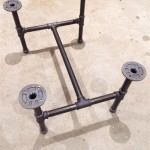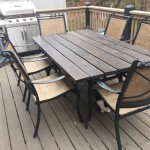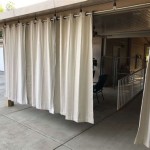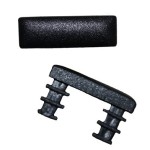Edging a Paver Patio: The Essential Guide
Edging a paver patio is a crucial step in ensuring its durability and aesthetic appeal. It serves multiple purposes, from enhancing the visual impact to preventing soil erosion and paver displacement. This comprehensive guide will delve into the essential aspects of paver patio edging, providing valuable insights to help you create a visually stunning and long-lasting outdoor space.
Materials for Edging
The choice of edging materials varies depending on factors such as budget, style, and functionality. Here are some popular options:
- Brick or Paver Edging: Matching the edging material with the pavers menciptakan a cohesive look. It is durable and easy to install but can be costly.
- Concrete Edging: This versatile material comes in various shapes and sizes, offering flexibility in design. It is affordable and provides a strong barrier.
- Metal Edging: Metal edging, such as aluminum or steel, is durable and can create a modern or industrial aesthetic. It is easy to cut and shape but requires careful installation to prevent corrosion.
- Plastic Edging: Plastic edging is flexible, affordable, and easy to install. However, it may not be as durable as other materials.
- Natural Stone Edging: Natural stone, such as granite or limestone, adds a touch of elegance and durability. It is more expensive than other options but provides a unique and timeless look.
Edging Techniques
There are two primary techniques for edging a paver patio:
- Shallow Edging: In this method, the edging is installed partially below the paver surface, providing a flush appearance. It is suitable for patios that will not experience heavy traffic.
- Deep Edging: With deep edging, the edging extends deeper into the ground, creating a more secure and stable barrier. It is recommended for patios with high traffic or in areas prone to erosion.
Installation Considerations
Proper installation is essential for the longevity of your paver patio edging. Here are some key considerations:
- Excavation: Dig a trench the depth of the edging material plus a few inches for a gravel base.
- Gravel Base: Place a layer of compacted gravel in the trench to provide drainage and stability.
- Edging Installation: Set the edging material in the trench and level it using a string line or laser level.
- Backfilling: Fill the trench around the edging with soil or other suitable material and compact it.
- Caulking: For some materials, such as metal edging, caulking can be used to seal any gaps and prevent water infiltration.
Edging a paver patio is a valuable investment that enhances its appearance, prevents damage, and ensures its longevity. By choosing the right materials, techniques, and installation methods, you can create a beautiful and functional outdoor space that will be enjoyed for years to come.

What Is The Best Edging For Pavers Perfect

5 Beautiful Paver Edge Restraint Options Western Interlock

Paver Edging The Importance Of Lehigh Valley Pa

Proflex 6 Ft Paver Edging In Black 1260 Hd The Home Depot

Plastic Edge Restraint Vs Concrete Which Is Better Western Interlock

Choosing And Installing The Right Paver Edging Restraint Two Brothers Brick Paving Patio

Enhance Your Landscape With Walttools Concrete Paver Edging

5 Beautiful Paver Edge Restraint Options Western Interlock

Paver Border And Edging Options Livin On The Edge With Belgard

Paver Edging A Comprehensive Guide Js Brick Pavers








